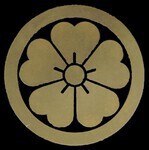I don't want to be controversial, but since there is no legal definition (also not by the NBTHK), it's a matter of the Japanese language, and how the different terms are perceived by native speakers or others with a good command of the Japanese language and way of thinking.
FWIW, I'm 100% with "Nobody" in his use of the definition Shinsakutô. But to each his own, and certainly one would hear different opinions among Japanese collectors as well. I know people who think we're still in the Shinshintô period, since all swords made are modeled after older swords.
In art, and especially Japanese art, some things can't be properly labeled and put in the appropriate drawer. One's Gendaitô is the other's Shinsakutô or Shinshintô. But art is art, no matter if it was made one thousand or only one year ago. And I guess that's why we are here, certain definitions are just an academic exercise. Some twenty or so years ago there was a discussion in the Token Bijutsu about Mekugi placement, heatily faught among non-Japanese collectors. The NBTHK, asked to be the referee, finally wrote that "we don't put much emphasis on this topic in evaluating swords as works of art" - this pretty much sums it up.
Again, I'm not being snobbish, or saying that the Japanese are always right, but we shouldn't be side-tracked by discussions that ultimately don't help us to understand why one sword is just a weapon, and another a Jûyô Tôken.
End of today's sermon.





